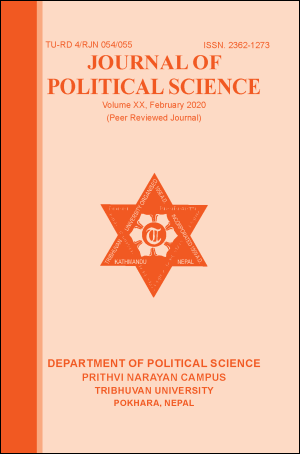Nepal and India Relation After 12 Points Understanding
DOI:
https://doi.org/10.3126/jps.v20i0.31795Keywords:
Bilateral relation, blockade, high level visits, promulgationAbstract
With multidimensional aspects, Nepal India relation is historical, social, political and culturally embodied. Both countries adhere to a unique relationship of friendship and cooperation characterized by open borders and deep-rooted people-to-people contacts of kinship and culture. Pedestal on secondary data this article aims to discuss the major developments in Indo-Nepal relation after 12 points understanding. Nepalese and Indian governments, in order to review the past treaties and agreements between the two countries, made EPG of four members each from both countries. Similarly, Nepal and India exchanged high level visits between them. Nepal made a new constitution in 2015 and promulgated it. However, India was not satisfied with some of the content of it, so India imposed unilateral blockade. Later, Nepal India relation was normalized, and again, Nepal and India have a dispute on Limpiyadhura-Lipulekh border. The vital concern is what has happened to the relations built on historical ties? This paper looks at the relations India once had with Nepal, and where it stands today. There have been many ups and downs in Nepal India relation after 12 points understanding and even during the present border dispute. However, all problems and disputes can be solved through diplomatic dialogues at various levels. Bilateral relations can grow further with unfaltering commitment to the doctrines of peaceable coexistence, sovereign equality, and understanding of each other’s aspirations and sensitivities.




